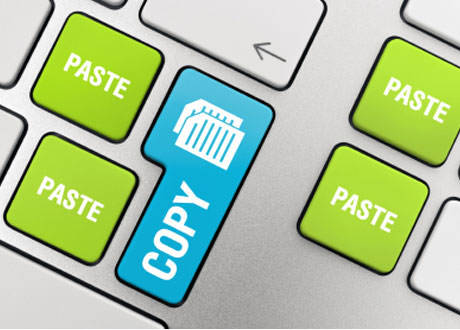Copy Data Management isn’t about deleting ALL copies of data that you have created from your primary storage. Nor is it about stopping you from making data copies. Some vendors may believe that if they come in and make yet one more ‘golden’ copy of your data, you are set for life. I don’t think this is what customers want. Just like with tape. Many folks say “tape is dead” but that is mostly preached from vendors who; a) don’t sell tape, b) have never stood in the shoes of IT professionals who need to actually mange data and c) meet shrinking IT budgets.
Just like tape is still quite useful and cost effective for long-term retention, copy data management isn’t about just having one copy of your data either.
Copy Data Management is really all about helping IT transition from creating copies of data, for necessary business purposes such as data protection, and in-turn, be able to utilize that data to get more functional use from it, rather than have it sit idle as an insurance policy.
The challenge is, up until today, there really has been no way to be able to utilize these data copies that are sitting idle. Part of the reason is due to how these copies are created. As an example, IT today takes that backup copy they made and then run a restore process, a timely restore process, once per month for the development organization for their test/dev processes. This is really a long and involved process that takes time to manage and the data is quickly a month old. This means the results of the test/dev processes yield less than optimal results.
A good copy data management solution can deliver the most recent production data for development to take advantage of, increasing the quality of the code that comes out of development. In addition, a good copy management solution can reduce, through automation, the data management effort it takes to bring up the latest copy of production data for test/dev environments.
The first thing is to start with Snapshots. Storage services, like Snapshots, have been a part of storage systems for years. The reality is, IT has been taking Snapshots for decades but these Snapshots are hardly ever used. They are not used because there have been no tools available to help IT 1) see the Snapshots they have created or 2) a way to crate the Snapshot such that it has value and 3) a way to take advantage of the Snapshots that have been created for multiple purposes.
Catalogic Software allows IT to be able to help IT take advantage of their snaps all with one solution. Their ECX solution provides IT a way to manage or create Snapshot, SnapMirror and SnapVault policies that allow for multiple different retentions all with one process. Next, IT has the ability to utilize these snaps by selecting the copy of data they want to use, and then bring up that snap in multiple locations for multiple business purposes. For example: say you wan to bring up your Test/Dev environment in India every evening after development has developed new code, for testing purposes. Instead of spending time ensuring the right copy of data is copied over to India for testing, IT can simply take advantage of a flexclone to spin up a copy of the latest data quickly and the folks in India now get all day to test instead of trying to do data management and make sure they have the latest copy of data. Next lets say you want to bring up a copy of that same snap across the country for DR purposes. Not only that, you can bring up that same copy, in another location, test it and then have the option to tear it down, leaving no data sprawl, or promote it to production in the case of a real disaster.
IT can now leverage the Snaps they create for multiple business purposes. This saves data management time, and money from storage sprawl as well as reduces the technologies that make these copies in the first place.
IT now has the ability to be bold and move their data center forward, become more efficient, save money and become more agile with the technologies (snapshots) they have already purchased. Catalogic ECX help IT exploit these technologies. And evolved their data center.
